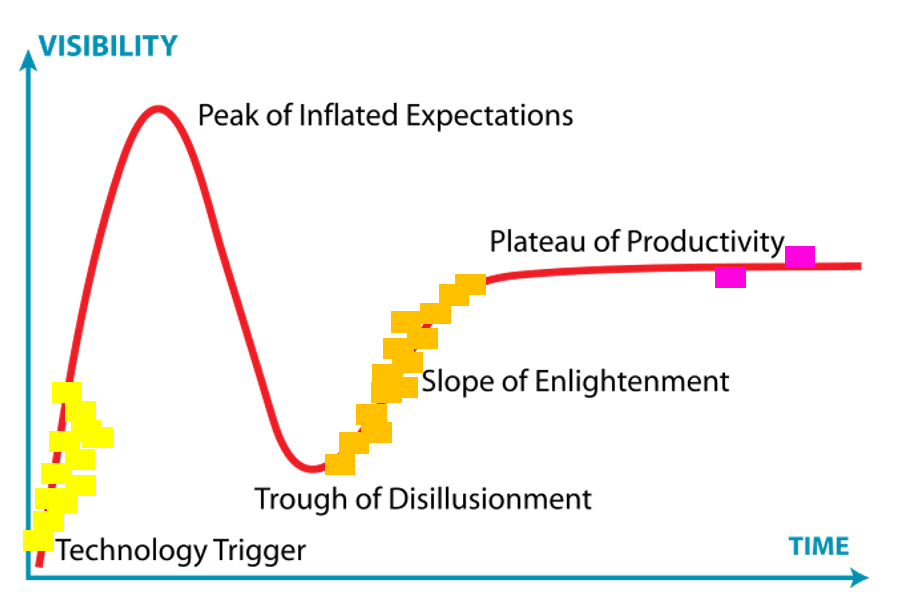Share
I’ve talked a lot about gamification. Most specifically, how you can use gamification to motivate learners before, during and after learning. And by and large, I meet with a pretty positive reaction. There is the odd doubter of course. But generally speaking, people tend to brighten up when you wheedle the subject into yet another conversation.
But my enthusiasm got a reality check recently at the eLN CONNECT Conference. It was here that Netex UK’s own Mike Byrne’s used Gartner’s Hype Cycle to query the audience about their views on gamification. The Hype Cycle is a graphical device developed by research firm Gartner that is used to represent the maturity and adoption of technologies through five phases. It starts with the technology trigger (a potential technology breakthrough kicks things off), upwards to the peak of inflated expectations (when early publicity produces some success but many failures), down into the trough of disillusionment (interest wanes as it fails to quickly deliver), up again on the slope of enlightenment (instances of the technology becoming widely understood and working) and finally onto the plateau of productivity (mainstream adoption take off).

Mike invited the audience to place stickers on where they believed gamification of elearning was currently on the hype cycle. The diagram above is a faithful reproduction of those results. Perhaps most immediately notable is that almost everyone seems to believe that gamification is on the up. They just aren’t sure where it’s on the up from. A sizable portion of the audience were confident enough to place stickers on the slope of enlightenment. This suggests some at least are seeing proper working applications out there.
Many still see gamification as an emerging technology. Something that people like me talk about but doesn’t really make an impact on their working lives. This is quite revealing. Gamification has been with us as solution for motivating learners for some years now. So what’s the hold up?
One or two hardy souls were even confident enough to vouch that they had reached the productivity plateau Valhalla. This is of course good news. Though it’s worth pointing out that the eLN CONNECT audience is a sophisticated one and could easily be ahead of the curve.
But the fact remains that many still see gamification as an emerging technology. Something that people like me talk about but doesn’t really make an impact on their working lives. This is quite revealing. Gamification has been with us as solution for motivating learners for some years now. So what’s the hold up?
There are, of course, several challenges. Cost is one. Others dislike the competitive element; they feel uncomfortable in an environment when they might constantly be judged. This includes learning professionals as well as learners.
But the most common reasons cited appear to concern the complexity of gamification programmes. As in:
- It’s complicated because it needs new systems – most LMSs aren’t equipped to deal with gamification solutions and anyway what does a gamification system look like?
- It’s complicated to tie gamification to existing organisational strategy and objectives, and that makes it harder to sell into senior management.
- It’s equally complicated to tie gamification to learning objectives. It’s all very well employees being great at shoot’em ups but that doesn’t necessarily mean they will understand what been taught.
What’s needed therefore is a quicker and simpler route to gamification that overcomes these challenges. Something that can still provide the excitement and benefits that gamification can clearly offer but is just far simpler and easier to adopt.
In part two of this blog, we reveal a way you can make this happen by sidestepping most of the complexity.
Share


One Response
1 XRP to BTC (1 XRP to Bitcoin) Exchange Calculator.